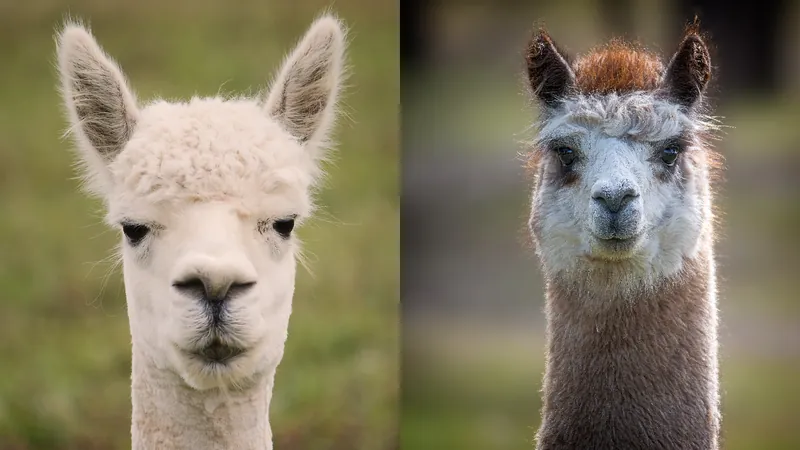
Llamas vs. Alpacas: Unraveling the Mystery of These Charming Camelids
2025-08-18
Author: Wei
Spotting the Differences Between Llamas and Alpacas
Llamas and alpacas may look remarkably similar at first glance—both are fluffy, slender creatures with long necks and thrive in herds. But what sets these two enchanting species apart?
"This is the number one question we get," shares Rebecca Gill, co-owner of Cotton Creek Farms in Michigan, where both animals roam.
Camelid Cousins: Distinct Yet Related
Llamas (scientifically known as *Lama glama*) and alpacas (*Lama pacos* or *Vicugna pacos*, depending on the expert) belong to the camelid family. David Anderson, associate dean for research at the University of Tennessee, explains that these creatures originated in North America.
Thousands of years ago, during the Ice Age, camelids migrated from North America to Asia via the Bering Land Bridge, with others traveling south to Central and South America. The animals that ventured north became camels, while those in the south evolved into llamas, alpacas, guanacos, and vicuñas.
The Evolutionary Roots of Llamas and Alpacas
Despite being viewed as exotic in the U.S., these animals actually have evolutionary ties to the land. Anderson calls this situation a 'repatriation.' Recent studies suggest that domestication took place about 6,000 to 7,000 years ago, with guanacos evolving into llamas and vicuñas into alpacas—though this history remains a topic of some debate.
Key Differences to Spot in the Wild
When it comes to sizes, llamas overwhelmingly win the weight game, tipping the scales at 280 to 450 pounds (130 to 200 kg) and towering around 45 inches (115 cm) at the shoulders. Alpacas, in contrast, weigh a mere 100 to 175 pounds (45 to 80 kg) and stand at about 36 inches (90 cm). Gill emphasizes, "Even the largest alpaca doesn’t come close to a llama in size."
Their distinct ear shapes also offer clues: alpacas have pear-shaped ears and shorter noses, while llamas flaunt longer, banana-like ears and elongated faces. Additionally, alpacas boast fine, silky fleece, making them prized for textiles, while llamas sport coarser fur, less suitable for clothing.
Traits and Temperament: More Than Just Looks
Historically, llamas have been favored as pack animals by cultures like the Incas, known for carrying goods and even supplying fertilizer. On the flip side, alpacas are sought after for their luxurious and warm fiber. Gill points out, "You wouldn’t want to use llama fiber for anything worn closely to the skin."
Temperament is another area where the two diverge: llamas are known for being more protective and alert, often willing to confront threats, whereas alpacas are gentler and more shy, preferring to avoid confrontation.
Intelligence and Trainability of These Fascinating Animals
Both llamas and alpacas are recognized for their intelligence and trainability. Gill notes, "People are often astonished at how smart and gentle they can be." This intelligence helps foster unique bonds with humans, making them not just farm animals but beloved companions.




 Brasil (PT)
Brasil (PT)
 Canada (EN)
Canada (EN)
 Chile (ES)
Chile (ES)
 Česko (CS)
Česko (CS)
 대한민국 (KO)
대한민국 (KO)
 España (ES)
España (ES)
 France (FR)
France (FR)
 Hong Kong (EN)
Hong Kong (EN)
 Italia (IT)
Italia (IT)
 日本 (JA)
日本 (JA)
 Magyarország (HU)
Magyarország (HU)
 Norge (NO)
Norge (NO)
 Polska (PL)
Polska (PL)
 Schweiz (DE)
Schweiz (DE)
 Singapore (EN)
Singapore (EN)
 Sverige (SV)
Sverige (SV)
 Suomi (FI)
Suomi (FI)
 Türkiye (TR)
Türkiye (TR)
 الإمارات العربية المتحدة (AR)
الإمارات العربية المتحدة (AR)